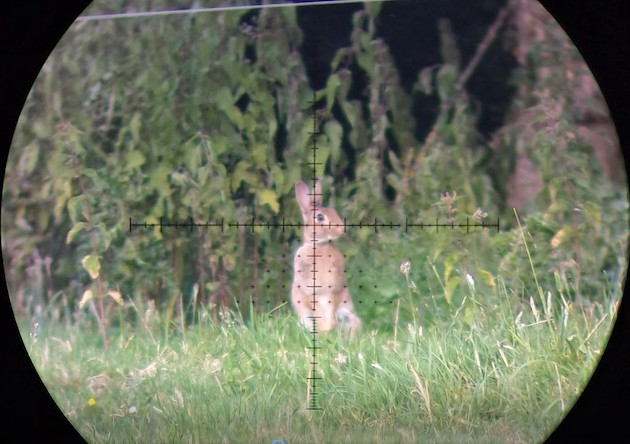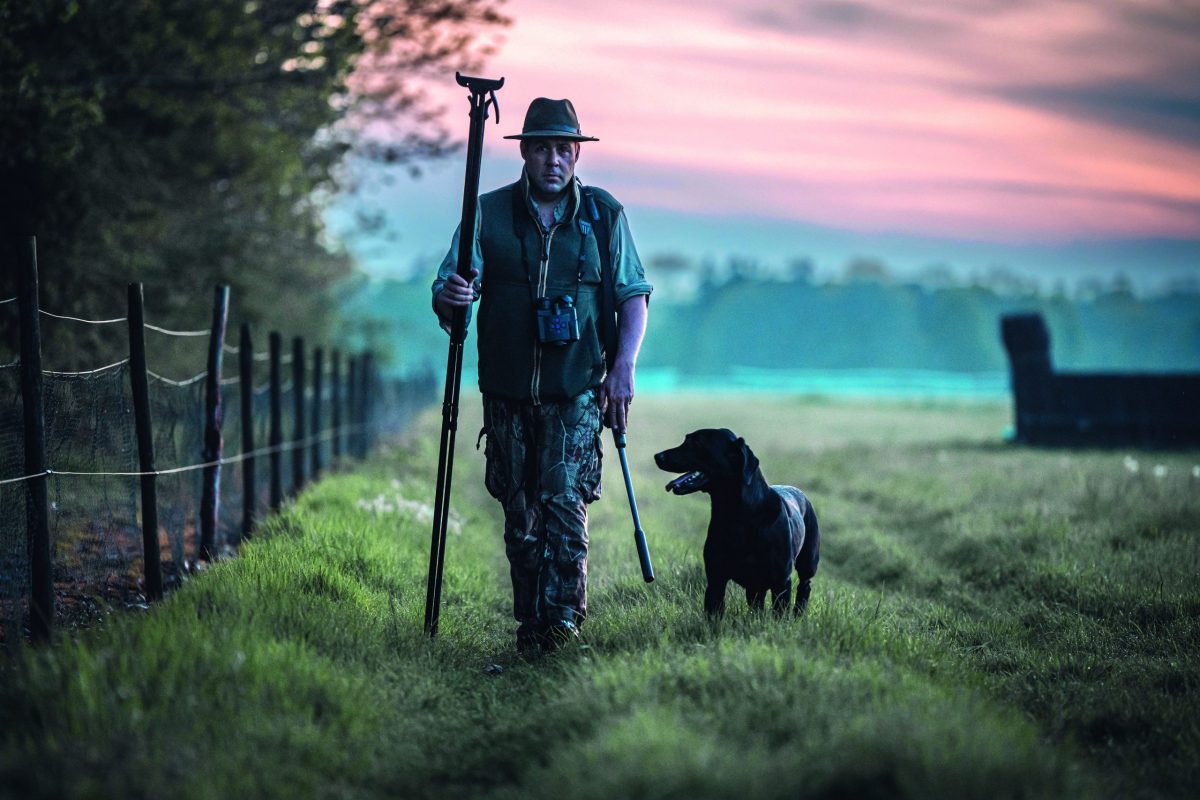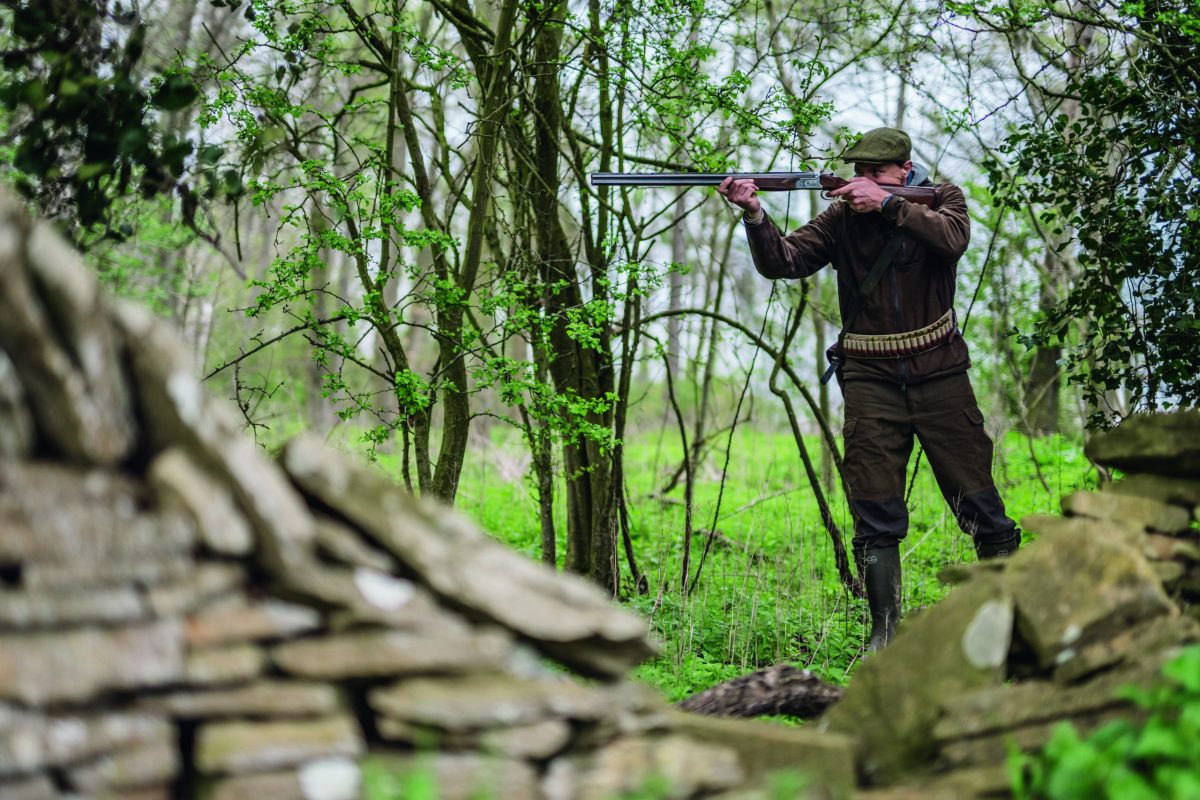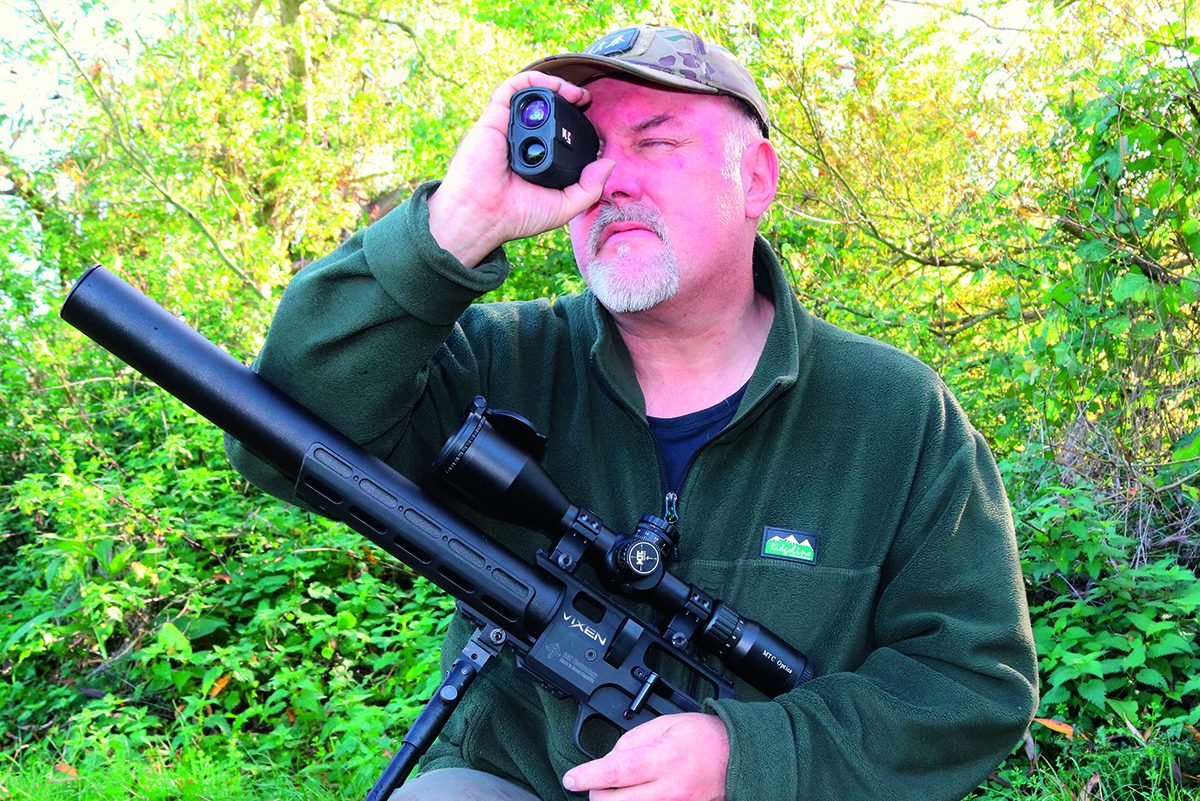The rabbits are back
In Shooting Times Mat Manning rejoices in the return of his favourite quarry as there is an explosion of rabbits on his patch after last year’s dearth

Mat has rabbits back in his cross-hairs after numbers soared on a couple of his permissions
Rabbits have always had a reputation for being able to reproduce at a rapid rate, but there weren’t many signs of that happening on my patch last year. Thankfully, things are looking very different this summer and I am delighted to report that these resilient creatures are, once again, breeding like rabbits.
Several factors appear to have contributed to last year’s dearth of bunnies where I live in the west of England. The finger is usually pointed at myxomatosis when rabbit numbers fall off a cliff, but I think the sudden and very dramatic decline is most likely to have been caused by rabbit haemorrhagic disease (RHD).

Droppings and telltale nibblings around the fi3ld margin indicate the return of the rabbits
This highly infectious disease kills extremely quickly, has a very high mortality rate and often leaves no obvious signs on its victims. This means it can easily go unnoticed by anyone other than those of us who take a keen interest in our local rabbit populations.
Interestingly, the sudden disappearance of rabbits also appeared to coincide with a steep rise in badger numbers, so it could be that predation also played a part. I have on numerous occasions seen badgers grubbing up young rabbits from their nests. So it’s good news that rabbits appear to be making a comeback, and I hope that is the case in other regions too. Their return in my neck of the woods began when I was called out on a couple of jobs where populations were reaching problematic levels through the late spring and early summer.
I expected the comeback to be a gradual one, but we are witnessing a real explosion. Roadside verges that were devoid of rabbits last summer are now dotted with bunnies of all sizes, and I am getting an increasing number of calls from landowners who need help keeping numbers in check.
My first significant outing was on a pony paddock in late June. The owner, who was understandably worried that the increasing number of holes appearing around the edge of the field could cause a serious injury to a horse or rider, was absolutely desperate for me to get over there. I must confess that, after the recent rabbit drought, I thought he was probably exaggerating when he said there were “literally hundreds” in the little paddock, but there were certainly dozens of them enjoying the dew-softened grass when I turned up for my first evening recce.

Mat suggests shooting prone from the support of a bipod as one of the best ways to keep rabbit numbers in check
Bigger tally
Because of the obvious desperation in the landowner’s call for help, I had made the unusual decision of taking an airgun along on that inaugural visit, and I’m glad I did. I managed to account for nine in the final hour of daylight, then returned the following evening to make an even bigger tally. And what a joy it was to have the freezer filled with rabbit meat again after such a long lean spell.
I assumed that that particular infestation was going to be something of a one-off, but there has also been a bunny explosion on one of the estates where I am tasked with the control of grey squirrels. The rabbits here are causing problems in the gardens and woods — where they are annihilating vegetable crops and stripping the bark from saplings — and once more in the paddocks. Again, it is this last which is of most concern because of the risk of serious injury.
The early signs of the rabbits’ return were welcome in my eyes, and it was exciting to see their droppings and telltale nibbling and scrapes around the field margins. It is less of a novelty now, though, and the outer edges of the paddocks are starting to look like putting greens as a result of the bunnies’ close grazing — putting greens with some rather unsightly excavations around their edges, that is.

Mat’s outing with the FX Impact MKII proves worthwhile, with a good harvest of wild meat for the table
Discomfort
A quiet approach to with an air rifle is usually my preferred method when it comes to controlling rabbits, especially when I’m working in close proximity to livestock and houses. (See here for the best air rifles for shooting rabbits.) As much as I enjoy the challenge of trying to creep within striking distance during roving sorties, there is no denying that the best bags are made by pinpointing the busiest areas then taking them out; preferably shooting prone from the support of a bipod if you can put up with the discomfort.
I was back out on my rounds one evening last week and it was a particularly lovely one, with a sky filled with swallows and swifts snatching insects that were hatching in the warmth that followed an unseasonably wet day. Such conditions aren’t just good for hungry birds; rabbits don’t usually like venturing out in the rain but soon emerge to binge on the fresh green shoots after it has passed.
Stomping about close to the burrows puts rabbits on edge, so I steered clear of the excavations as I made my way into the field, before settling into my chosen spot in the shade of some overhanging trees. The magazine of my FX Impact MkII was ambitiously fully loaded with no fewer than 28 pellets, and my final preparations included little more than folding out the legs of my bipod.
Clamp
Incidentally, a lot of airgun shooters ask me whether it’s safe to use a clamp-type bipod attachment on modern carbon air bottles. The line from FX Airguns is that it is perfectly safe — I do it all the time and simply make a point of ensuring that I don’t graunch it up too tightly.
Being sprawled on your belly can soon get uncomfortable, especially on hard, uneven ground that has been poached up by cattle. It can feel like trying to get comfortable on a heap of rubble. I was treated to a soft, flat surface on this occasion, albeit rather damp after the rain, and reckoned I could probably stick it out for the best part of two hours.
Most shooters’ ability to tolerate a long stint on their belly tends to be influenced mostly by whether or not they are getting shots. Thankfully, I only had to wait about 20 minutes for my first opportunity when a two-thirds-grown rabbit lolloped out from the nettles on the edge of a small copse.
Final kick
At less than 30m and taken from the support of a bipod, the shot was little more than a formality. The pellet found its mark and the rabbit rolled over with one final kick of its hind legs. The muted report from the FX’s muzzle was so quiet that the cattle just the other side of the barbed-wire fence behind me didn’t bat an eyelid.
Duties at home prevented me from staying out until nightfall, but I managed to add three more rabbits to the tally before it was time to heave myself up from the ground and shake out the cramps.
Rabbit shooting on summer evenings still thrills me as much these days as it did during my first forays with an airgun some 35 years ago. The joy of being out in the heavily scented evening air as sunset approaches, and swooping swallows gradually trade their place in the sky with bats, is one that was sorely missed last year.
I hope I get to experience it plenty more times over the coming weeks, months and years, and I hope that those of you who enjoy pitting your wits against rabbits will also get to relish their return.








